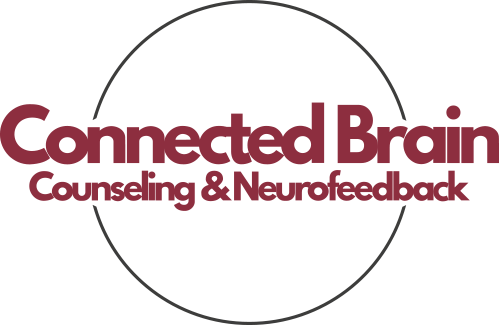Eye Movement Desensitization and Reprocessing (EMDR) is a form of therapy that has gained significant attention for its effectiveness in treating trauma, anxiety, and PTSD. While many people turn to EMDR to alleviate distressing memories, it’s not uncommon for some to experience an unexpected side effect—nightmares. In this blog, we’ll explore the relationship between EMDR and nightmares, why they happen, and how to manage them as part of the healing process.
What is EMDR Therapy?
EMDR is a psychotherapeutic approach designed to help individuals process and heal from traumatic experiences. The therapy uses bilateral stimulation, such as eye movements, to reprocess disturbing memories and reduce their emotional impact. Over time, individuals become less triggered by these memories, leading to relief from symptoms associated with PTSD, anxiety, and other disorders.
How Does EMDR Work?
During EMDR sessions, a therapist guides the client through a series of eye movements while they focus on distressing memories. This process helps the brain reprocess these memories and integrates them in a less disturbing way. EMDR is known to accelerate the brain’s natural healing processes, allowing clients to heal from trauma more efficiently than with traditional talk therapy alone.
The Link Between EMDR and Nightmares
Although EMDR is highly effective, some individuals may experience an increase in nightmares following their sessions. This can be surprising and unsettling for clients, especially if nightmares were not a significant issue before beginning therapy. But why do nightmares occur?
- Memory Reprocessing: EMDR forces the brain to confront and process traumatic memories. As these memories resurface and get reprocessed, they may appear in dreams or nightmares as the brain works through them.
- Emotional Overload: EMDR can sometimes bring up deep-seated emotions that were previously suppressed. This emotional intensity can manifest in dreams, leading to vivid or distressing nightmares.
- Healing Process: Nightmares can be a sign that the brain is actively working to process trauma. While uncomfortable, they are often a temporary part of the healing process and may decrease as therapy progresses.
Managing Nightmares After EMDR
If you’re experiencing nightmares following EMDR sessions, there are several strategies you can use to manage them and maintain your emotional well-being:
- Communicate with Your Therapist: Let your therapist know about any nightmares you’re experiencing. They can help you understand why these dreams are happening and offer guidance on how to handle them.
- Grounding Techniques: Practice grounding exercises before bed, such as deep breathing or progressive muscle relaxation, to help calm your mind and reduce the likelihood of nightmares.
- Keep a Dream Journal: Writing down your dreams can be a helpful way to process them. This also allows you to notice patterns and discuss any recurring themes with your therapist.
- Visualization Techniques: If a specific nightmare is bothering you, try using visualization techniques during the day to change the outcome of the dream. Imagine a positive resolution to the distressing scenario.
 Why Nightmares Can Be a Sign of Progress
Why Nightmares Can Be a Sign of Progress
While nightmares may seem like a setback, they can actually be a sign that your brain is processing trauma in a way that will ultimately lead to healing. The reprocessing of disturbing memories can stir up emotional responses, which may appear in the form of nightmares. However, as therapy continues, the intensity of these dreams usually diminishes, and the emotional charge connected to the traumatic memory reduces.
In many cases, clients report that their nightmares lessen in frequency and intensity as they continue with EMDR and move further along in their healing journey.
Should You Be Concerned About Nightmares After EMDR?
Experiencing nightmares after EMDR is typically a normal part of the therapeutic process, but it’s important to discuss any concerns with your therapist. If the nightmares are causing significant distress or affecting your sleep, your therapist may adjust the pace of therapy or introduce additional coping strategies.
While nightmares can be uncomfortable, they are usually temporary and indicate that your brain is actively working to process the trauma.
EMDR and Its Long-Term Benefits
Despite the temporary discomfort that nightmares may cause, the long-term benefits of EMDR are well-documented. Many individuals who complete EMDR therapy report a significant reduction in symptoms related to PTSD, anxiety, depression, and trauma. Over time, they experience fewer nightmares and intrusive thoughts as their brain successfully reprocesses traumatic memories.
If you are struggling with nightmares during EMDR therapy, remember that these are often a sign that your brain is making progress. With the support of your therapist, you can learn to navigate these challenges and continue moving forward in your healing journey.
While experiencing nightmares after EMDR therapy can be unsettling, they are often a normal part of the brain’s healing process. Nightmares signal that the brain is actively reprocessing trauma, and with time, they typically decrease in intensity and frequency.
- American Psychological Association – Eye Movement Desensitization and Reprocessing (EMDR)
This page provides an overview of EMDR and its effectiveness in treating PTSD and trauma-related conditions. - Psychology Today – EMDR: A Path to Healing
Psychology Today offers insights into the EMDR process, its benefits, and what clients can expect from this therapeutic approach. - Verywell Mind – What You Should Know About EMDR Therapy
Verywell Mind explains the process and benefits of EMDR therapy, including its role in addressing trauma-related symptoms.
If you’re undergoing EMDR therapy and experiencing nightmares, be sure to communicate with your therapist to ensure you receive the support you need during this challenging but transformative time. Remember, healing from trauma is a process, and the discomfort you may feel now is often a step toward long-term emotional recovery.





